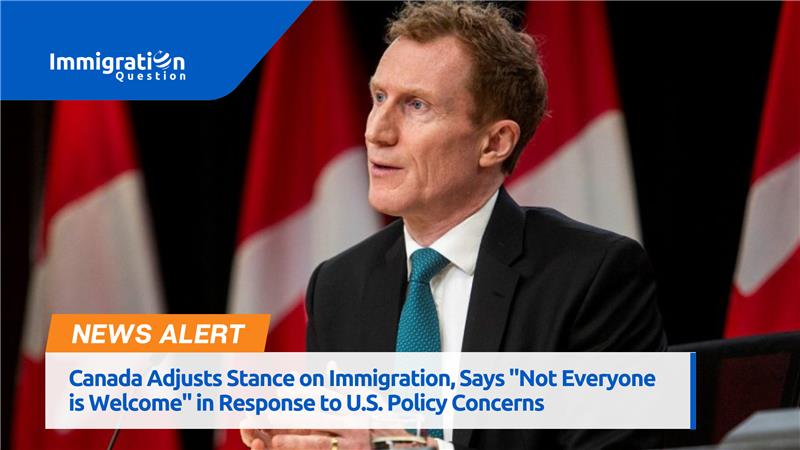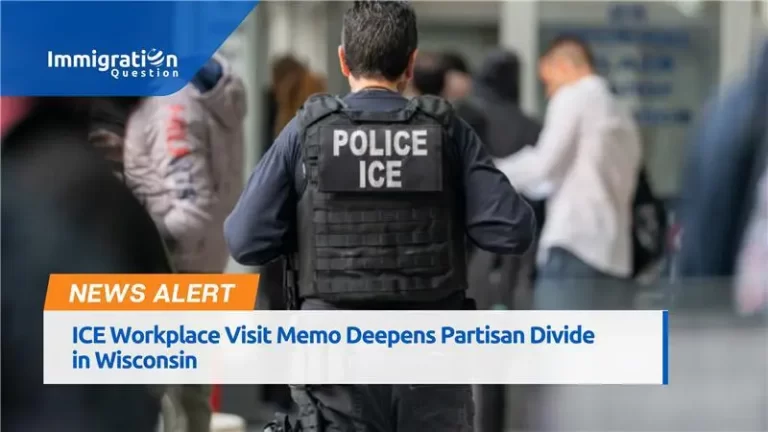Canada Adjusts Stance on Immigration, Says “Not Everyone is Welcome” in Response to U.S. Policy Concerns
In recent developments, Canada has taken a notable shift in its immigration stance, with Immigration Minister Marc Miller expressing that “not everyone is welcome,” a departure from the country’s longstanding, inclusive immigration approach. This adjustment in rhetoric reflects concerns over the potential immigration surges if former U.S. President Donald Trump implements large-scale deportation policies upon his return to office.
This change highlights a significant shift in Canada’s approach compared to seven years ago, when Prime Minister Justin Trudeau famously welcomed asylum seekers in a message shared widely on social media.
Rising Concerns Over Border Security
In a recent statement to the Globe and Mail, Miller emphasized that Canada would focus on securing its borders and ensuring that migration occurs through “regular pathways.” His comments reflect a proactive approach to managing potential increases in migrant crossings, particularly in remote areas along the U.S.-Canada border, which spans over 5,500 miles.
The anticipated deportation plans by Trump, with a specific focus on individuals without legal status who are deemed public safety risks, have raised concerns that undocumented residents in the U.S. may seek refuge in Canada. Canadian officials, including Deputy Prime Minister Chrystia Freeland, have reinforced this stance, underscoring the need for strong border management while acknowledging their commitment to humanitarian responsibilities.
Historical Context: Canada’s Welcoming Reputation
During Trump’s first term, thousands of Haitians entered Canada after losing temporary protected status in the U.S. At that time, Trudeau’s open call to those “fleeing persecution” seemed to reflect Canada’s liberal approach to asylum. However, the Canadian government now appears to be tempering its previous stance, as it prepares to address practical challenges, such as housing shortages and social service strains, that an influx of migrants could exacerbate.
An Evolving Immigration Strategy
Canada’s 2025-2027 Immigration Levels Plan, released in late October, outlines a reduction in target admissions over the next three years, with annual goals decreasing from 395,000 in 2025 to 365,000 by 2027. This marks a significant shift from prior plans, which set targets as high as 500,000 new immigrants per year by 2025. The new approach also aims to address Canada’s rising challenges, such as housing shortages and strain on social services, which have intensified concerns among Canadians about the rapid pace of immigration.
Legal and Ethical Debates Over the Safe Third Country Agreement
Canada’s legal framework includes the Safe Third Country Agreement (STCA) with the U.S., which mandates that asylum seekers must apply for refugee status in the first “safe” country they enter. However, the STCA has faced criticism, with experts like Audrey Macklin from the University of Toronto arguing that it imposes unnecessary risks on asylum seekers. Macklin asserts that the agreement, especially after recent amendments, pushes migrants to seek dangerous, unmonitored entry routes rather than allowing them to apply at official border checkpoints. Macklin also warned that the current system effectively promotes human smuggling, as individuals now must avoid detection for 14 days before making an asylum claim.
Comparison with U.S. Immigration Policies – Canada Adjusts Stance on Immigration
Canada’s recalibrated stance coincides with the United States contemplating more restrictive immigration measures under shifting political influences. While Canada has historically been viewed as an alternative for those facing stricter U.S. immigration policies, concerns are mounting that increasing restrictions in the U.S. may drive more applicants toward Canada. Canada’s adjustments reflect a cautious approach to avoid overextending its resources and ensure that both immigrants and Canadian residents benefit equitably.
Humanitarian Obligations and Public Safety
Migration experts highlight the need for Canada to reconsider its approach, balancing public safety with international humanitarian commitments. Under the Refugee Convention, Canada is obliged to provide refuge to those with a credible fear of persecution in their home countries. However, recent policy changes and the federal government’s firm messaging suggest a growing focus on border control over humanitarian aid, which some say undermines Canada’s commitment to international asylum standards.
The Way Forward: Balancing Border Security and Humanitarian Needs
The anticipated changes to U.S. immigration policy, combined with evolving Canadian perspectives, underscore a complex challenge for policymakers on both sides of the border. Advocates argue for revisiting policies like the STCA to ensure safer pathways for asylum seekers. Whether Canada’s current stance will adapt as conditions change remains to be seen, but it’s clear that immigration policy is at a crossroads where both security concerns and humanitarian responsibilities must be addressed.
To stay updated and informed, watch our news section or drop your immigration queries for professional attorneys to reply to on Immigration Question








